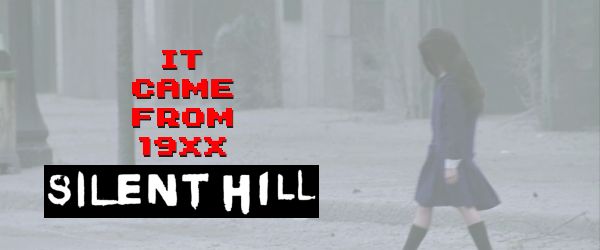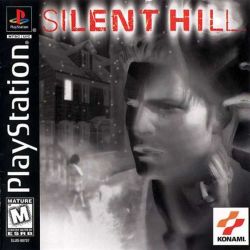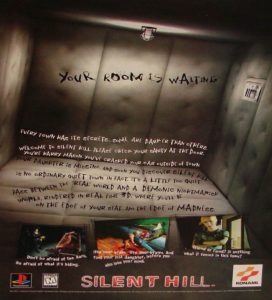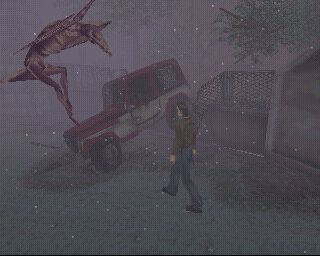
Horror games have changed in recent years. As “walking simulators” like Layers of Fear and hide-and-seek tributes such as Outlast have risen in popularity, old-school survival horror titles have become increasingly scarce. So join us, zombies and ghouls, as we revisit one of horror gaming’s classics in time for Halloween.
 Silent Hill was a special beast when it was released way back in the year 1999 for Sony’s PlayStation. Some consider it the beginning of a splinter genre, psychological horror, wherein gamers were disturbed more often than scared. But does it hold up?
Silent Hill was a special beast when it was released way back in the year 1999 for Sony’s PlayStation. Some consider it the beginning of a splinter genre, psychological horror, wherein gamers were disturbed more often than scared. But does it hold up?
Yes and no. The original Silent Hill is just as challenging as it once was — perhaps even more so, considering the tighter controls we’re accustomed to these days. All-around good guy Harry Mason, whom players possess throughout this hellish journey, moves with all the grace and speed of C-3PO. When he isn’t staggering around town, ineffectively swinging metal pipes, he has the amazing ability to momentarily stun himself by haphazardly approaching walls and doors. This is a frequent occurrence, considering the persistence with which the camera will work against you.
Unlike the Resident Evil franchise at the time, which used static camera angles to frame every moment with intent, Silent Hill’s camera mostly remains at a distance behind Harry’s back… until it doesn’t. Partway through a recent play, I became convinced the darn thing was sentient and trying its damnedest to kill poor Harry! It changes to more atmospheric angles for cinematic moments — like the opening walk down a dark, winding alley — which makes sense. But then it randomly decides to stare Harry in the face! With a little practice, players can learn to control the camera somewhat, usually by outrunning it and turning a certain direction, but it’s a nuisance all throughout the game.
 So we have a clumsy, possibly drunk protagonist with a camera that frequently falls asleep at the wheel. You might ask, “Are there any positives?” But then you’d be outing yourself as one of those post-1999 babies.
So we have a clumsy, possibly drunk protagonist with a camera that frequently falls asleep at the wheel. You might ask, “Are there any positives?” But then you’d be outing yourself as one of those post-1999 babies.
Silent Hill is considered a classic for a reason, and it has everything to do with the eponymous town. There are few video game locations so iconic that nearly an entire series takes place inside its border. While much of its lore is only hinted at in this first title, the story, characters, and events which transpire in this game are still something best experienced for yourself.
Following a car accident during a road trip with his young daughter, Cheryl, Harry staggers into town and subsequently descends unexpectedly into hell. Loaded with symbolism, (mostly) clever puzzles, heaping helpings of troubling visuals, and hilariously nonchalant voice acting, Silent Hill is a good experience in spite of its age. Fighting off unending waves of terrible monsters never ceases to thrill, and its cast of characters are somehow likable and creepy all at once. Let’s also not forget the handful of full-motion videos (FMVs) played at only the most important (or random) times during the story. Does anyone in Silent Hill have a normal, non-frightening default facial expression? It’s like they all just watched Nicolas Cage’s The Wicker Man and couldn’t quite cope.
 Regardless, there is some brilliance to find in this game — perhaps most of all in its level design. When those air raid sirens fire off and the sky blackens, and Harry briefly dozes off to reawaken in a deeply decayed version of the town, it can be easy to feel overwhelmed. Enemies flood the streets with increased fervor and greater numbers, and the constant layer of fog thickens as if to aid them. Carrying only a map and one old-timey flashlight to traverse the area, you’d think the game would be impossible to explore in times when you’re left without a hint or objective. Countless streets end in gaping chasms, while rusted walkways with missing sections replace the asphalt… yet somehow, it works.
Regardless, there is some brilliance to find in this game — perhaps most of all in its level design. When those air raid sirens fire off and the sky blackens, and Harry briefly dozes off to reawaken in a deeply decayed version of the town, it can be easy to feel overwhelmed. Enemies flood the streets with increased fervor and greater numbers, and the constant layer of fog thickens as if to aid them. Carrying only a map and one old-timey flashlight to traverse the area, you’d think the game would be impossible to explore in times when you’re left without a hint or objective. Countless streets end in gaping chasms, while rusted walkways with missing sections replace the asphalt… yet somehow, it works.
Whether through clever enemy placement or a field of view that lets you see just far enough ahead, I never found myself lost in the darkness, nor did I feel herded in a particular direction. And it isn’t because of any familiarity — the one time I made any notable progress as a wee ankle-biter, my older brother’s PlayStation memory card tragically imploded. I’m convinced there is some intuitive level design here because, while wandering this large sandbox, the path forward was never difficult to discover. Or I was lucky. One of those.
Lastly, the graphics (as in most PlayStation-era games) don’t quite hold up. Everything is blocky and pixelated, especially when played on an HDTV, and it’s all, well, ugly. Some of the enemies have lost their sinister edge due to this, most notably the knife-wielding Grey Children who, looking back, are about as threatening as the Pillsbury Doughboy. Regardless, the game’s disturbing imagery is still apparent — even amongst its warts and wrinkles. Perhaps in an attempt to spruce up their groundbreaking game, Konami released a prettier reimagining of Silent Hill for the PlayStation 2, PSP, and Wii known as Silent Hill: Shattered Memories, but aside from the visuals and a new “Therapy Sessions” minigame, it pales in comparison to the original.
Silent Hill is still a really good game, but much clunkier and rough around the edges than you may remember. That said, it will forever be cemented as a key component in the golden age of horror video games. It’s deservedly so, because this title launched a revolution in the medium. It also boasts tons of replayability with multiple endings and unlockables to boot. Plus, it has aliens.







